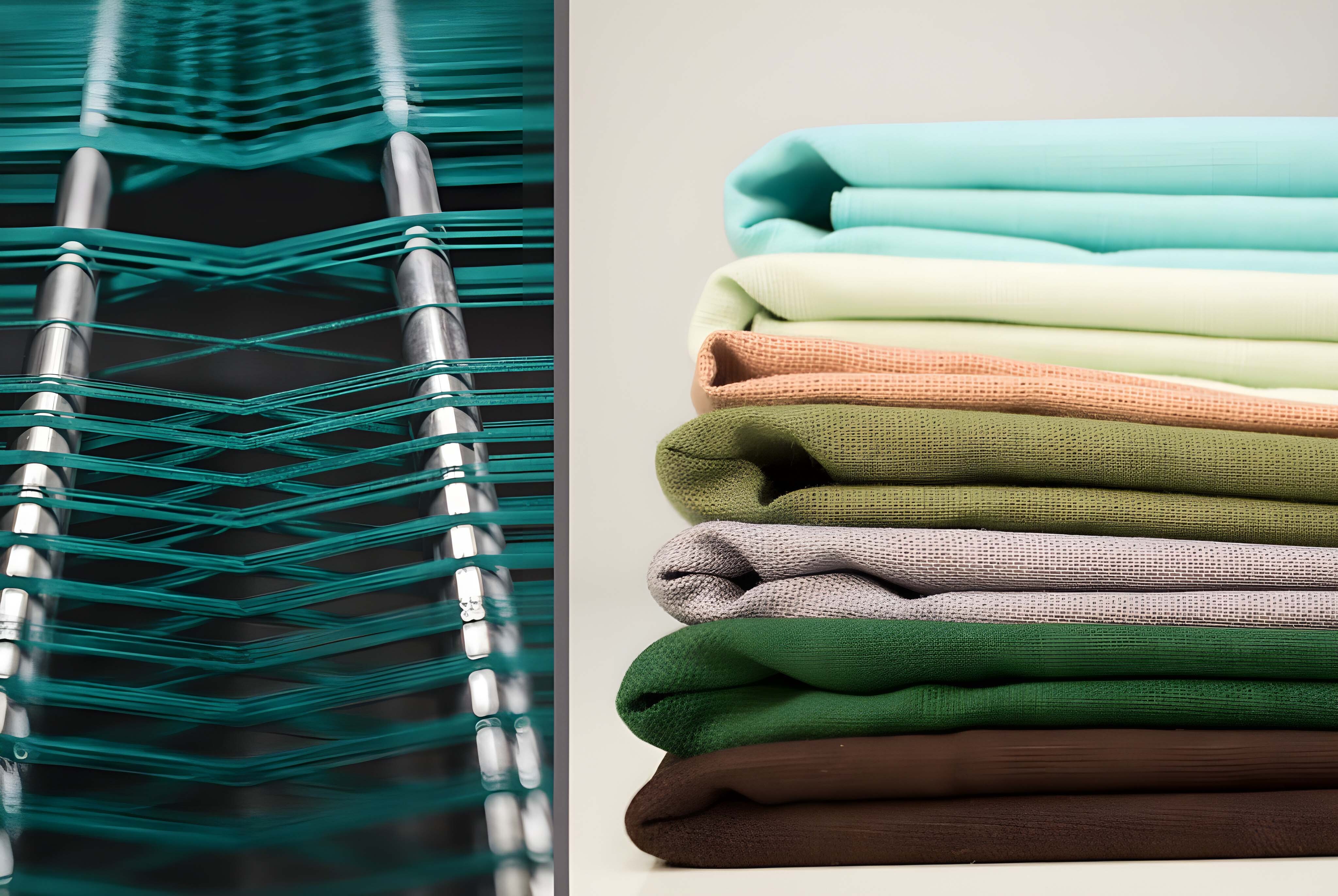Why Fabric Matters: Choosing the Best Materials for Indian Weather

India, with its diverse landscapes and varying climates, presents a unique set of challenges when it comes to dressing appropriately for the weather. Whether you’re dealing with the sweltering summer heat, the sticky monsoons, or the chill of winter, the fabric you choose plays a pivotal role in how comfortable you feel. Understanding which materials work best for the Indian climate can help you stay cool, dry, and comfortable while ensuring that your outfits still look stylish and sophisticated.
1. Cotton: The Ever-Popular Choice for Heat
When it comes to the Indian summer, no fabric is more synonymous with comfort than cotton. Known for its breathability and softness, cotton is the fabric of choice during the scorching heat. It allows air to circulate freely, helping to keep the body cool.
Cotton absorbs sweat and moisture efficiently, making it ideal for hot and humid conditions. Whether you’re opting for a casual look or something more traditional, cotton can be easily styled to suit any occasion. Light cotton shirts, kurtas, and dresses are perfect for daytime wear, ensuring you stay comfortable while looking effortlessly chic. It’s no wonder that cotton remains a staple in every Indian wardrobe.
2. Linen: Perfect for the Tropical Heat
Linen is another fabric that is well-suited for the Indian climate. With its loose weave, linen is highly breathable, making it a great option for the humid and hot weather prevalent in many parts of India. It has a natural cooling property, which allows air to pass through the fabric, helping to regulate body temperature.
Linen’s crisp texture gives it a smart, sophisticated look, making it perfect for both casual and semi-formal wear. However, it does have a tendency to wrinkle easily, but many people embrace this relaxed look as part of the charm of linen. From breezy shirts to flowing dresses, linen is versatile, comfortable, and stylish.
3. Khadi: The Fabric of Tradition
Khadi holds a special place in Indian fashion, both for its cultural significance and its comfort. This fabric, traditionally handspun and handwoven, is made from cotton, wool, or silk, and it has an inherent airiness that makes it ideal for the hot and humid Indian summers.
Khadi is durable, eco-friendly, and gives off a rustic yet elegant vibe. Many modern designers are reimagining Khadi in contemporary silhouettes, making it a popular choice for both traditional and modern outfits. The fabric absorbs moisture and allows the skin to breathe, ensuring you stay comfortable throughout the day. Whether it’s a simple kurta or a more elaborate outfit, khadi’s timeless appeal makes it an ideal fabric for the Indian climate.
4. Silk: Lightweight Yet Elegant for Special Occasions
While silk might not always be the first fabric that comes to mind for hot weather, it can be a great option when you’re looking to add a touch of luxury to your wardrobe without compromising on comfort. Modern silks, especially those made with lightweight threads, are breathable and less heavy, making them suitable for warm weather.
Silk’s natural sheen and smooth texture also make it a go-to fabric for formal events, evening gatherings, and celebrations. While traditionally heavier silks were reserved for colder seasons, lighter variants like georgette, chiffon, and crepe offer the perfect blend of comfort and elegance during warmer months. The gentle drape of silk enhances the look, making it a great choice for outfits that require both style and comfort.
5. Wool: Ideal for the Chill of Winter
When the temperature drops and the chill of winter sets in, wool is a fabric that should never be underestimated. Though wool is often associated with cold climates, modern woolen fabrics are available in lighter weights, making them perfect for the Indian winter, which is typically milder than those in many other parts of the world.
Wool is a natural insulator, which means it helps retain body heat while allowing moisture to evaporate. Lightweight wool suits, sweaters, and shawls provide warmth without being overly bulky, ensuring you stay cozy without feeling restricted. Wool’s natural fibers also help regulate body temperature, keeping you warm without overheating. During the cooler months, wool is an ideal fabric for layering, ensuring that you stay comfortable while exuding elegance.
6. Rayon: A Budget-Friendly Alternative
Rayon is a semi-synthetic fabric made from wood pulp that has a soft, smooth texture. It is known for its ability to mimic natural fibers like silk and cotton while being more affordable. Rayon is highly breathable and has a flowy drape, making it a popular choice for both casual and formal wear in warm climates.
Its moisture-wicking properties ensure comfort, especially in humid conditions, making it a great alternative to natural fabrics like cotton. Rayon is also versatile, available in various weights, and can be used in a range of clothing items, from dresses to tops. Although not as durable as cotton or linen, rayon’s affordability and comfort make it a popular choice for budget-conscious fashion lovers.
7. Modal: Soft and Breathable
Modal, a type of rayon, is a fabric that stands out for its softness and breathability. Made from beech tree pulp, modal is one of the most comfortable fabrics available, offering a silky smooth feel against the skin. Its breathability makes it an excellent option for warm climates, where moisture-wicking and airflow are crucial.
Modal is less prone to shrinking or fading compared to traditional rayon, and it holds its shape well even after multiple washes. It’s an ideal fabric for casual wear, especially during hot and humid weather, offering a balance of comfort and style.
